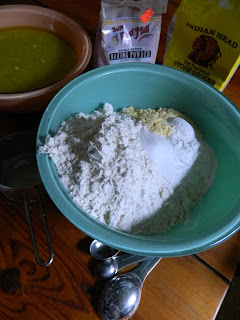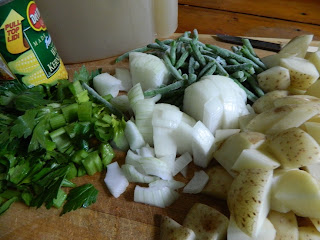1. not proud or arrogant; modest: to be humble although successful.
Humble is a great word. It rhymes with such charmers as bumble, stumble and crumble. Perhaps it's definition is what makes it such a standout. In a world where elementary school children sport "bling" and carry expensive cell phones, Humble has been forgotten in the pile of elderly and obsolete phraseology. People seldom behave in a Humble manner these days. Shocking conduct is routinely splashed across the gossip rags that line grocery store shelves.
Humble is without a doubt out of fashion.
I, however, see Humble as a reliable partner. Combined with Strength and Confidence, Humble provides a catalyst that can lead to the path of success. As an amateur Historian, I believe that the Victorians used this Humble formula in the most efficient and effective manner. Buoyed by scientific breakthroughs and astronomical economical accomplishment, Victorians thrilled to new ideas like Spiritualism,bicycling, day trips and ice cream. Through this modernity, however, the rigorous and unyielding class system remained intact, but servants weren't the only members of society who lived a Humble life. Even the most powerful industry chiefs managed to stay Humble while still flashing outlandish displays of wealth and prestige, perhaps knowing that everything in life is vulnerable and can be swept away in mere minutes.
Victorian cooks embraced Humble. Serving a magnificent roast for Sunday dinner, they continued to use the meat throughout the week, transforming the large cut into salad, hash and soup. The next Sunday, they'd start all over again. A wonderful television series was made in the 1980's that walks modern folks through the daily life of a Victorian kitchen. This series is a wonderful experiment caught on film and will make anyone grateful for even the most annoying, antique or ragged 20th century kitchen:
http://beekman1802.com/recipes/the-victorian-kitchen-tv-series/
Farming is a Humble occupation. Some might take offense with that idea, seeing Humble as a degradation or insult. Really, though, many occupations could be described as Humble or certainly Humbling. Farming is a little different. Daily, Farmers are hand-in-hand with dirt, manure, after-birth and innards. Each day can bring the joy and heartbreak that is firmly tied to the whims of nature and the wisdom of choices.
Today, my tomatoes made me Humble. They stand bravely in the windy field, silently accusing me of planting them too early in this northern region. The empty row of green beans that were lovingly planted, but never germinated seems to stare reproachfully at me, accusing me of perhaps planting them too deeply. The bolting onions wave at me; unwelcome blossoms Humbling me. I had no power over the mercurial hot-to-cold weather that produced the premature flowering, but I still felt responsible. My basil Humbled me too. Only 4 inches tall and already going to seed. I pinched their tops back, scolding them.
"You're too little to make seeds", I tell them, wagging my finger at them. " I need a freezer full of pesto for the winter. You have a lot more growing to do. Now get to it!"
I wandered over to the beehive after putting the basil in it's place. I felt instantly better. Our Sweetbees can always be counted on to provide a thrill of success. The now 2-story hive was humming with activity. The previous week's addition of the second story showed heavily honeyed frames and countless healthy bees.
It had been a long day of weeding, mowing and mulching. Our kids had helped with the day's chores and everyone was tired.
Dinner loomed. It was rare that I didn't look forward to creating meals, but today was one of those days. Driving home sore and sunburned, I racked my brain for nutritious options. There were potatoes in the cellar and two packs of Tilapia fillets in the big, upright freezer. Riding next to me in the passenger seat, my son held the two bolted onions, still covered with dirt.
Suddenly, it hit me. Hash! Fish Hash!
Hash is just a medley of ingredients thrown in a pan and stir-fried. It's a great choice when there is not enough of each separate item to serve them alone. The leftovers -if there are any- are even better.
Winter'Rest Farm Fish Hash
5-6 white potatoes, boiled and cubed
 4-5 Tilapia fillets
4-5 Tilapia fillets
2 green onions, sliced.
Evoo and butter
Salt and pepper
Heat a large skillet. Melt the butter and evoo. Today, I used 3 TBSP of butter and a 1/4 cup of evoo. The evoo helps the butter reach a hotter temperature without burning, and the butter is a key part of the final flavor.
Toss the potatoes in and brown them on medium/low. Remove. Add the fish and brown. Don't worry if it flakes and breaks. That's what you want. Add the bottom of the green onion and continue to cook. Add back the potatoes and toss. Sprinkle with the green tops of the onions and serve. Delicious.
Hopefully, in the very near future, I will be able to use our black bass to make this meal. In the meantime, I will use what I have to produce a hearty, filling, and tasty meal for my family.
Humble comes in all packages. Fish hash is only one, but it will satisfy your spirit and fortify you for the coming day- and Humble will help you through.
Humble is a great word. It rhymes with such charmers as bumble, stumble and crumble. Perhaps it's definition is what makes it such a standout. In a world where elementary school children sport "bling" and carry expensive cell phones, Humble has been forgotten in the pile of elderly and obsolete phraseology. People seldom behave in a Humble manner these days. Shocking conduct is routinely splashed across the gossip rags that line grocery store shelves.
Humble is without a doubt out of fashion.
I, however, see Humble as a reliable partner. Combined with Strength and Confidence, Humble provides a catalyst that can lead to the path of success. As an amateur Historian, I believe that the Victorians used this Humble formula in the most efficient and effective manner. Buoyed by scientific breakthroughs and astronomical economical accomplishment, Victorians thrilled to new ideas like Spiritualism,bicycling, day trips and ice cream. Through this modernity, however, the rigorous and unyielding class system remained intact, but servants weren't the only members of society who lived a Humble life. Even the most powerful industry chiefs managed to stay Humble while still flashing outlandish displays of wealth and prestige, perhaps knowing that everything in life is vulnerable and can be swept away in mere minutes.
Victorian cooks embraced Humble. Serving a magnificent roast for Sunday dinner, they continued to use the meat throughout the week, transforming the large cut into salad, hash and soup. The next Sunday, they'd start all over again. A wonderful television series was made in the 1980's that walks modern folks through the daily life of a Victorian kitchen. This series is a wonderful experiment caught on film and will make anyone grateful for even the most annoying, antique or ragged 20th century kitchen:
http://beekman1802.com/recipes/the-victorian-kitchen-tv-series/
Farming is a Humble occupation. Some might take offense with that idea, seeing Humble as a degradation or insult. Really, though, many occupations could be described as Humble or certainly Humbling. Farming is a little different. Daily, Farmers are hand-in-hand with dirt, manure, after-birth and innards. Each day can bring the joy and heartbreak that is firmly tied to the whims of nature and the wisdom of choices.
Today, my tomatoes made me Humble. They stand bravely in the windy field, silently accusing me of planting them too early in this northern region. The empty row of green beans that were lovingly planted, but never germinated seems to stare reproachfully at me, accusing me of perhaps planting them too deeply. The bolting onions wave at me; unwelcome blossoms Humbling me. I had no power over the mercurial hot-to-cold weather that produced the premature flowering, but I still felt responsible. My basil Humbled me too. Only 4 inches tall and already going to seed. I pinched their tops back, scolding them.
"You're too little to make seeds", I tell them, wagging my finger at them. " I need a freezer full of pesto for the winter. You have a lot more growing to do. Now get to it!"
I wandered over to the beehive after putting the basil in it's place. I felt instantly better. Our Sweetbees can always be counted on to provide a thrill of success. The now 2-story hive was humming with activity. The previous week's addition of the second story showed heavily honeyed frames and countless healthy bees.
It had been a long day of weeding, mowing and mulching. Our kids had helped with the day's chores and everyone was tired.
Dinner loomed. It was rare that I didn't look forward to creating meals, but today was one of those days. Driving home sore and sunburned, I racked my brain for nutritious options. There were potatoes in the cellar and two packs of Tilapia fillets in the big, upright freezer. Riding next to me in the passenger seat, my son held the two bolted onions, still covered with dirt.
Suddenly, it hit me. Hash! Fish Hash!
Hash is just a medley of ingredients thrown in a pan and stir-fried. It's a great choice when there is not enough of each separate item to serve them alone. The leftovers -if there are any- are even better.
Winter'Rest Farm Fish Hash
5-6 white potatoes, boiled and cubed
 4-5 Tilapia fillets
4-5 Tilapia fillets2 green onions, sliced.
Evoo and butter
Salt and pepper
Heat a large skillet. Melt the butter and evoo. Today, I used 3 TBSP of butter and a 1/4 cup of evoo. The evoo helps the butter reach a hotter temperature without burning, and the butter is a key part of the final flavor.
Toss the potatoes in and brown them on medium/low. Remove. Add the fish and brown. Don't worry if it flakes and breaks. That's what you want. Add the bottom of the green onion and continue to cook. Add back the potatoes and toss. Sprinkle with the green tops of the onions and serve. Delicious.
Hopefully, in the very near future, I will be able to use our black bass to make this meal. In the meantime, I will use what I have to produce a hearty, filling, and tasty meal for my family.
Humble comes in all packages. Fish hash is only one, but it will satisfy your spirit and fortify you for the coming day- and Humble will help you through.






















































